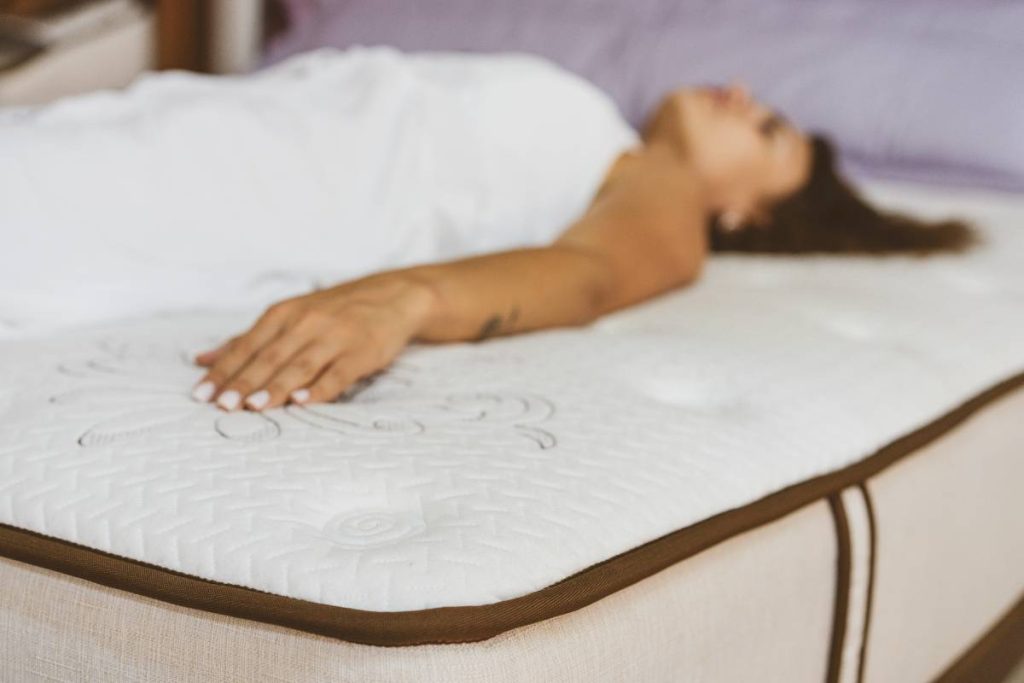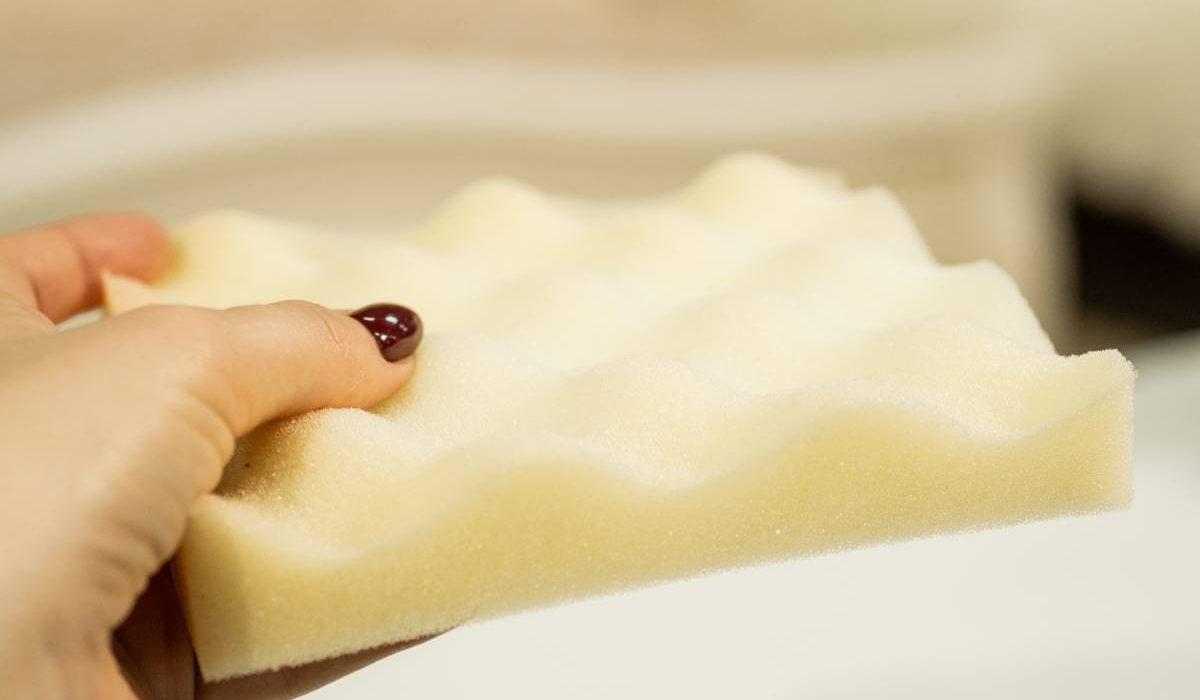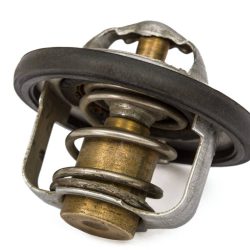Memory foam is a super cool material that you can find in a lot of things, like mattresses and pillows. It’s really comfy and supportive, making it a top pick for people who want to get a good night’s sleep.
It’s different from regular bedding stuff because it responds to your body heat and moulds itself to your shape, so you get a custom sleeping experience. That way, your weight gets distributed evenly, and it helps with your blood flow, giving you a better sleep.
Whether you’re dealing with back pain or just want to snooze better, memory foam’s got your back with its awesome support and cushioning. It’s also really strong and versatile, so it’ll last you for years to come.
You might also read:
What is Memory Foam?
Memory foam, scientifically known as viscoelastic foam, is crafted from polyurethane, a versatile material renowned for its adaptive properties. Its distinctive characteristic lies in its responsiveness to body heat, enabling it to conform closely to the body’s contours. Initially conceived by NASA in the 1960s to enhance the safety and comfort of aircraft cushions, memory foam has evolved into a staple material in a wide array of consumer products.
The structure of memory foam comprises numerous tiny air pockets that allow it to compress under pressure and slowly revert to its original shape once the pressure is released. This mechanism, often referred to as the “memory effect,” is what distinguishes memory foam from traditional bedding materials.

When you lie down on a memory foam mattress or pillow, the foam moulds to your body, evenly distributing your weight and providing support where needed. This conformity reduces pressure points, alleviates discomfort, and promotes proper spinal alignment, resulting in a more restful sleep experience.
Over time, memory foam has undergone refinements to address common concerns such as heat retention. Modern memory foam products often incorporate cooling technologies to mitigate this issue, ensuring a comfortable sleeping temperature throughout the night.
Beyond mattresses and pillows, memory foam can be found in various products like mattress toppers, seat cushions, and even footwear. Its versatility, combined with its durability and ability to relieve pressure, has made it a sought-after material for those prioritizing comfort and support in their everyday lives.
How Does Memory Foam Work?
The secret behind memory foam’s comfort lies in its unique structure and composition. Unlike traditional mattresses or pillows made from springs or fibres, memory foam contains countless tiny air pockets that allow it to compress under pressure and gradually regain its original shape once the pressure is relieved. This characteristic is what gives memory foam its distinctive “memory” effect.
When you lay down on a memory foam mattress or pillow, the foam immediately begins to mould to the contours of your body, creating a personalized sleeping surface. As it conforms to your shape, it distributes your weight evenly, minimizing pressure points that can lead to discomfort or pain. By providing support where you need it most, memory foam helps alleviate strain on your muscles and joints, promoting better spinal alignment and allowing for improved blood circulation. This reduction in pressure can significantly enhance the quality of your sleep, allowing you to wake up feeling refreshed and rejuvenated.

Furthermore, memory foam’s ability to adapt to your body’s shape means that it can provide targeted support, regardless of your preferred sleeping position. Whether you sleep on your back, side, or stomach, memory foam contours to your body’s natural curves, ensuring a comfortable and supportive sleep surface throughout the night.
In addition to its comfort benefits, memory foam’s responsiveness can also help reduce motion transfer, making it an excellent choice for couples sharing a bed. This means that movements on one side of the bed are less likely to disturb the other person, allowing both partners to enjoy uninterrupted sleep.
While memory foam offers numerous benefits, it’s important to note that some people may find it retains heat, leading to a feeling of warmth during the night. However, many modern memory foam products are designed with cooling properties to address this issue, ensuring a more comfortable sleeping environment.
Overall, memory foam’s ability to conform to your body, relieve pressure points, and promote better sleep makes it a popular choice for those seeking a restful and rejuvenating night’s rest.
Benefits of Memory Foam
- Pressure Relief: Memory foam evenly distributes body weight, which can alleviate pressure points and reduce pain, especially for those with joint or back issues.
- Support: It provides excellent support by contouring to your body shape, maintaining proper spinal alignment, and reducing motion transfer, which can be particularly helpful for couples sharing a bed.
- Durability: High-quality memory foam can last for many years without losing its shape or support, making it a long-term investment in your sleep quality.
- Hypoallergenic: Memory foam is resistant to dust mites and mould, making it a good choice for allergy sufferers.
- Versatility: Memory foam can be found in mattresses, pillows, mattress toppers, and even in some furniture pieces, offering a wide range of options to suit different needs and preferences.

Drawbacks of Memory Foam
- Heat Retention: Memory foam can trap heat, causing some people to feel uncomfortably warm during the night. However, newer designs often include cooling features to mitigate this issue.
- Initial Odor: When memory foam is new, it may emit a chemical odour known as off-gassing. This usually dissipates within a few days to a few weeks but can be bothersome to some individuals.
- Cost: Memory foam mattresses and pillows tend to be more expensive than traditional alternatives, though they are often considered worth the investment due to their durability and comfort.
Conclusion
Memory foam is a revolutionary material that has transformed the way we think about comfort and support in bedding products. Its ability to conform to the body’s contours and relieve pressure has made it a favourite among sleepers worldwide.
While it has some drawbacks, the benefits it offers in terms of comfort, support, and durability often outweigh these concerns. Whether you’re looking for a better night’s sleep or relief from aches and pains, memory foam could be the solution you’ve been searching for.















